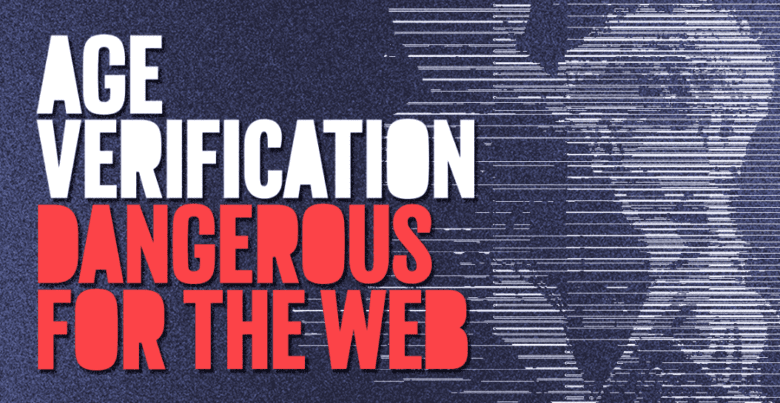Ensuring online safety for minors has become a critical concern in our increasingly digital world. The evolution of age verification laws has played a pivotal role in protecting young users from online threats. This article will delve into the evolution and importance of age verification, exploring legislative measures, technological biometric advancements, and the future of age verification systems.
Introduction to Age Verification
In today’s digital era, ensuring online safety is more crucial than ever. Platforms catering to various age groups need robust systems to protect minors from inappropriate content and online predators. Age verification has emerged as a key tool in this endeavor, evolving significantly over the years to meet new challenges and regulatory requirements.
Online platforms must implement robust age verification measures to safeguard minors and comply with legal standards. This involves using advanced technology and processes to confirm the users’ ages, thereby creating a secure online environment.
The Evolution of Age Verification Laws
The evolution of age verification laws has been driven by the need to protect minors online. Early methods, like entering a birth date, were easily bypassed and ineffective.
Technological advancements have improved age verification with biometrics and identity verification tools, such as facial recognition and ID scans, providing accurate and secure verification. These technologies enhance compliance with legal standards and safeguard minors from online threats.
The shift to stringent age verification measures reflects the growing need for robust age verification to create a safe online environment. This evolution ensures online platforms can effectively protect minors and maintain compliance with regulations.
Key Features of Modern-Age Verification Services
Modern age verification services include:
- Biometrics: Uses facial recognition and fingerprint scanning for accurate, secure verification.
- Identity Verification: Cross references user data with official records, like government-issued IDs.
- Geo-Location Tracking: Verifies user location to comply with regional age restrictions.
- Age Appropriate Content Filtering: Ensures users access only age-appropriate content.
- AI and Machine Learning: Enhances verification accuracy by analyzing user behavior.
- Blockchain Technology: Provides secure, tamper proof data storage.
- Continuous Authentication: Monitors user behavior to ensure ongoing verification.
- User Friendly Interfaces: Streamlines the verification process for a better user experience.
- Legal Compliance: Meets regulations like COPPA and GDPR to protect privacy rights.
- Data Privacy and Security: Uses encryption to safeguard personal information.

Legislative Measures and Regulations for Age Verification
COPPA and Its Impact on Age Verification
The Children’s Online Privacy Protection Act (COPPA) was a landmark law aimed at protecting minors online. It set stringent requirements for websites and services targeting children under 13, including mandatory age verification protocols. COPPA has significantly influenced how online platforms handle personal information and implement age restrictions.
Kids Online Safety Act (KOSA) Compliance
The Kids Online Safety Act (KOSA) extends protections by requiring comprehensive age verification across various online services. KOSA mandates that platforms design products responsibly, safeguard minors from harmful content, and participate in regular audits to ensure compliance. This federal bill emphasizes the need for robust age verification and highlights the growing concerns over minors’ online safety.
State-Specific Age Verification Laws and Their Implications
Several states, including California and Texas, have enacted specific laws to enhance online safety. The California Age-Appropriate Design Code Act and Texas HB18 impose stricter regulations, ensuring that businesses implement robust age verification measures to comply with legal standards. These laws require platforms to use advanced technology and verification processes to protect minors and prevent underage access to restricted content.
Challenges in Implementing Age Verification Laws
Implementing stringent age verification laws is not without challenges. Privacy concerns arise as robust verification often requires collecting sensitive data. Balancing effective age verification with user privacy is a significant hurdle. Additionally, the feasibility of these systems across diverse and international platforms remains a challenge.
Online platforms must navigate the complexities of international regulations and diverse user bases. The lack of standardized verification processes adds another layer of difficulty, making it challenging to pass comprehensive legislation. Despite these challenges, the need for robust age verification remains critical to safeguard minors online.
Benefits of Robust Age Verification
Robust age verification systems offer numerous benefits, ensuring online safety and regulatory compliance. Here are the key benefits:
- Protecting Minors: Prevents underage users from accessing inappropriate content, thereby safeguarding minors.
- Legal Compliance: Helps businesses comply with legal standards and avoid penalties, meeting regulations such as COPPA and GDPR.
- Enhanced Security: Utilizes advanced verification processes to create a secure online environment, protecting against online threats.
- User Trust: Builds confidence among users and parents, as platforms that prioritize online safety are more likely to be trusted.
- Improved User Experience: Streamlines the age verification process, making it seamless and efficient without compromising security.
- Reduced Liability: Mitigates the risk of legal issues and non compliance, protecting businesses from fines and lawsuits.
- Data Privacy: Ensures the protection of personal information, aligning with privacy rights and standards.
- Promotes Ethical Standards: Demonstrates a commitment to ethical standards, fostering a positive reputation for the business.
- Prevents Fraud: Advanced verification tools and biometrics help prevent fraudulent access and identity theft.
- Regulatory Adaptation: Keeps businesses updated with evolving regulatory requirements, ensuring ongoing compliance.
Future Trends in Age Verification
AI and Machine Learning in Age Verification
The integration of AI and machine learning in age verification promises more accurate and efficient processes. These technologies can analyze user behavior and data patterns to prevent fraudulent access. AI-driven systems offer real-time verification, enhancing the user experience and ensuring continuous protection.
Blockchain Technology for Enhanced Age Verification Security
Blockchain technology offers a decentralized and secure method for identity verification. By ensuring data integrity and transparency, it enhances the reliability of age verification systems. Blockchain’s immutable records provide a high level of security, making it a valuable tool in the age verification landscape.
The Move Towards Continuous Authentication in Age Verification
Continuous authentication, which monitors user behavior throughout their interaction with a platform, is an emerging trend. This approach ensures ongoing age verification and minimizes the risk of unauthorized access. Continuous authentication combines various biometrics and behavioral analytics to provide a seamless and secure user experience.
Conclusion on Age Verification and Online Safety
The continuous evolution of age verification laws and technologies reflects a collective commitment to prioritize online safety. By embracing innovative solutions and adhering to stringent regulations, we can create a safer digital environment for all users, especially minors. The need for robust age verification is evident, and businesses must implement these measures to protect minors and comply with evolving standards.
FAQ on Age Verification and Online Safety
1. Why is age verification important for online safety?
Age verification is crucial for online safety as it helps protect minors from accessing inappropriate content and interacting with potential online predators. By ensuring that users are of the appropriate age, online platforms can create a safer and more secure online environment, mitigating the risks associated with underage access.
2. How do modern age verification systems work?
Modern age verification systems use a combination of biometrics, such as facial recognition and fingerprint scanning, and identity verification tools, like government issued ID scans. These technologies provide accurate and secure methods to confirm a user’s age, ensuring compliance with regulatory requirements and enhancing overall online safety.
3. What are the benefits of implementing robust age verification measures?
Implementing robust age verification measures offers numerous benefits, including:
- Protecting minors from inappropriate content and interactions.
- Ensuring compliance with legal standards, such as COPPA and GDPR.
- Enhancing user trust and providing a better user experience.
- Reducing the risk of legal issues and non compliance penalties.
- Promoting ethical standards and safeguarding personal information.



